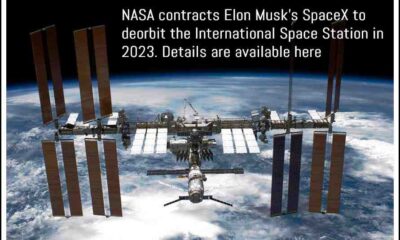Business
CNG and PNG will be less expensive because the government changed the method for determining the price of domestic natural gas
Published
1 year agoon

The new formula for determining the prices of compressed natural gas and piped natural gas (PNG) was approved by the Union Cabinet on Thursday. (CNG). Petrol prices were correlated with the Indian crude basket on the world market.
Following this decision, prices for both PNG and CNG can be lowered starting on Saturday, April 8. As a result, it is predicted that the price of PNG will drop by about 10% and the price of CNG by Rs. 5 to 6.
The price of domestic natural gas is now correlated with imported crude rather than gas from global hubs, according to Union Minister Anurag Thakur. From this point forward, the price of petrol will be 10% of the global price of the Indian crude basket. Every month, this will be decided.
Read Also:- The FIFA Under-17 World Cup in 2023 will no longer be held in Peru.
According to Thakur, the new formula will balance the interests of both consumers and producers. The New Domestic Gas Pricing Guidelines from 2014 govern how gas prices are set at the moment. On the first of April and the first of October, prices change.
What has changed in the revision…
The price of petrol will be fixed every month under the new formula. The price of petrol was fixed every six months under the old formula. At the same time, the price of the Indian crude basket for the previous month will now be used to determine the price of domestic natural gas.
The old formula applied the volume weighted price of the previous year averaged across all four global gas trading hubs (Henry Hub, Albena, National Balancing Point (UK), and Russian Gas).
What advantages will you receive?
The gas producer will not be harmed by market ups and downs under the new policy. Customers will also benefit.
By fixing the price of petrol under the new formula, the fertiliser and power sectors will also be able to obtain cheap petrol.
The energy sector will benefit from low-cost gas. The domestic gas producer country will be encouraged to produce more as a result of this.
The government’s goal is to increase the country’s natural gas share from 6.5% to 15% by 2030.
This step will contribute to the government’s goal of reducing emissions and reaching net “zero.”
To determine the new formula, a committee was established in October 2022.
The new formula is based on the suggestions made by a panel that Kirit Parikh, an economist, led to form in October 2022. He was given the assignment of reviewing the pricing policy because of the sudden increase in petrol prices. In actuality, the cost of domestic petrol rose from $1.79 per unit in October 2020 to $8.57 in October 2022. The increase in petrol prices on the global market was the cause of this.
The report was turned in by Kirit Parikh on November 30, 2022. It was suggested that the ceiling price, or upper price cap, should be in the range of $ 6.5 and that the floor price, or minimum price, for natural gas produced from the old APM field operated by ONGC and OIL should be in the range of $4 per unit. India is heavily reliant on energy imports. More than 85% of the crude oil and 55% of the natural gas are imported.
Approval of the National Space Policy 2023
The cabinet meeting also approved the new space policy. The National Space Policy 2023 has been approved by the cabinet, according to Union Minister Jitendra Singh. This policy has established the roles and duties of institutions like ISRO, New Space India Limited, and private sector organisations.
He claimed that in order to promote participation in this industry, the government had already allowed private businesses access to the space zone. The goal of this policy, according to Singh, is to give the Department of Space more responsibility. In addition to this, it is important to encourage participation in research, education, startups, and industries as well as ISRO mission activity.
You may like
-


North Korea asserts that the test of a multiple-warhead missile was successful
-


The Student Wing of Congress storms the Exam Body NTA office and locks it from within
-


“During President Murmu’s address to Parliament, PM Modi was shown 73 times, and LoP Rahul Gandhi was shown six times”: Congress
-


NASA contracts Elon Musk’s SpaceX to deorbit the International Space Station in 2023.
-


A Caution For The CBI In The Delhi Court’s Arvind Kejriwal Custody Order
-


Bar Council of India requests that bar associations abstain from demonstrating in opposition to new criminal laws
